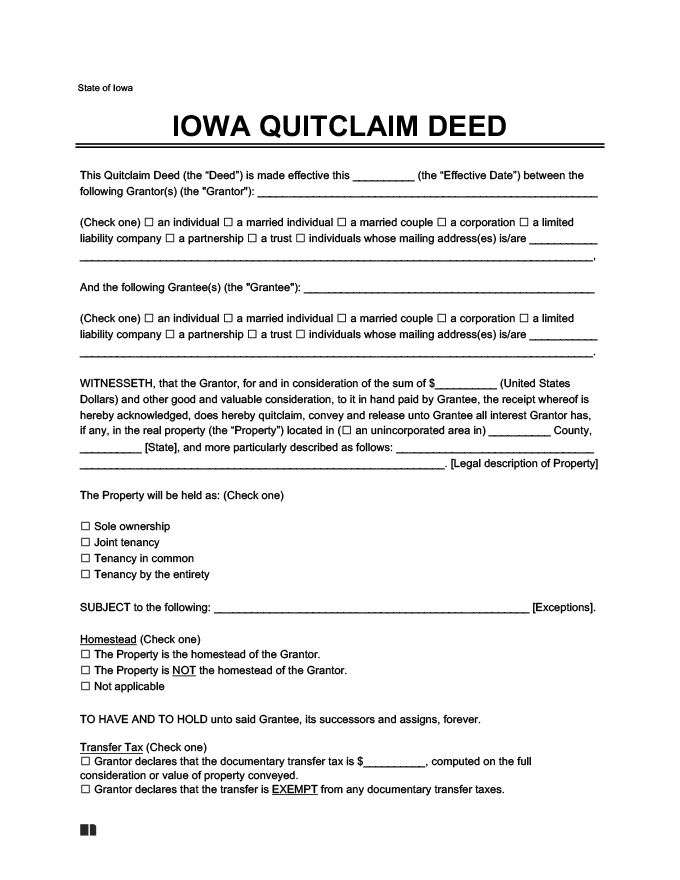Ensuring the enforceability of your quitclaim deed in Iowa requires a clear understanding of the filing process, protecting both the grantor and the grantee.
- Step 1: Locate the Legal Property Description on the Existing Deed
- Step 2: Fill Out the Quitclaim Deed Form
- Step 3: Transfer the Property's Legal Description From the Original Deed
- Step 4: Complete the Value Declaration and Groundwater Hazard Forms
- Step 5: Sign the Quitclaim Deed Before a Notary Public
- Step 6: File the Quitclaim Deed With the County Recorder
Step 1: Locate the Legal Property Description on the Existing Deed
The property owner should have access to the deed, which contains the legal property description. If you do not have a copy of the original deed, contact your county recorder’s office before you proceed.
Step 2: Fill Out the Quitclaim Deed Form
Complete the quitclaim deed using language from § 558.19 or similar. Your deed should state that the grantor “quitclaims” their interest in the real estate property without warranty of title.
Your quitclaim deed form should meet formatting guidelines established by § 331.606B and include the following information:
- Name, address, and phone number of the deed preparer
- Grantor and grantee’s names
- Name and mailing address of the grantee
- Document title
- The property’s legal description
Step 3: Transfer the Property’s Legal Description From the Original Deed
§ 331.606B requires every deed to include a legal description of the property, which can be found on your deed. § 354 outlines the following methods for describing real property:
- Subdivision name or title
- Lot number
- Plat document reference
- Parcel designation and reference number
- Section, township, and range number
- Metes and bounds
Step 4: Complete the Value Declaration and Groundwater Hazard Forms
If applicable, fill out a real estate transfer declaration of value form and a groundwater hazard statement. Iowa Admin. Code r. 701-79.5 requires deed submissions to include a value declaration with a quitclaim deed. Per § 558.69, you may also need to submit a groundwater hazard statement.
Step 5: Sign the Quitclaim Deed Before a Notary Public
The grantor should sign the quitclaim deed before a notary public, per § 558.20. § 9B provides notarization requirements.
Per § 561.13, you may also need the grantor’s spouse’s signature if the transferred property is a homestead occupied by the married couple.
Step 6: File the Quitclaim Deed With the County Recorder
In accordance with § 558.41, you must file your quitclaim deed with the Office of the County Recorder where the property is located.
